Why Automatic Gain Control (AGC)?
The first thermal imaging camera’s required the user to manually adjust the contrast and gain. Users were not always skilled enough to keep these settings adjusted properly. In the end, this led to missed information.
Automatic gain control (AGC) was developed to remove this frustration from the user so he could concentrate on his work. However, this also led to missed information.
But wait… how can this be? Can we really have the same problem with and without automatic gain control?
Unfortunately, yes.
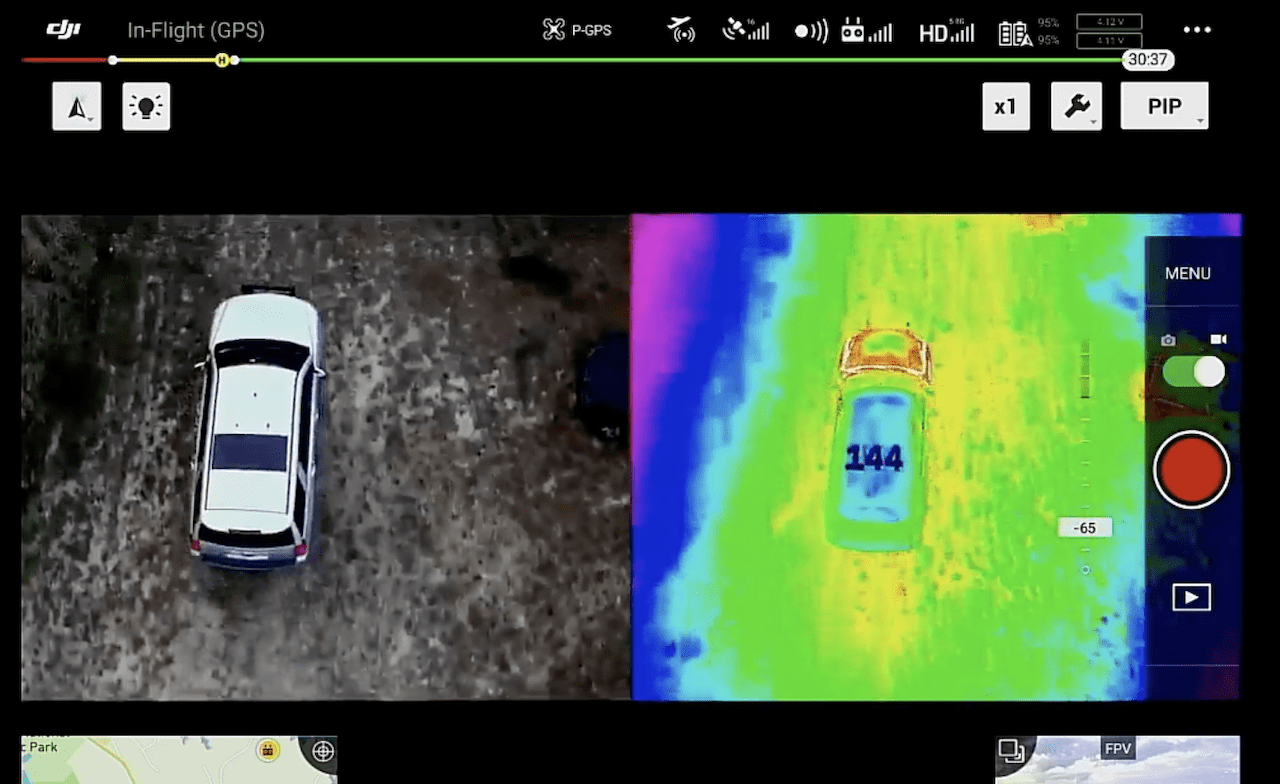
How Does Automatic Gain Control Work?
The camera finds the hottest and coldest temperature in the scene.
The hottest temperature becomes white (or red) and the coldest temperature becomes black (or blue). All the objects with temperatures in between take on different shades or colors based on their temperature compared to the maximum and minimum temperatures.
Automatic Gain Control is very good when you are interested in a good overall view of the area. You can concentrate on flying, investigating, or hunting rather than how to use the camera.
Overcoming the Problems of AGC
AGC is a problem when your critical object is:
- a small part of the scene
- it’s max/min temperatures are different from those of the overall scene.
For example, imagine you are in a helicopter. You look down on a scene in search of a police vehicle equipped with a thermal marker on the roof. It just so happens, a power transfer station is in the scene which is very hot, say 200ºF, even though the day is cold and the ground is 20ºF.
Recall that ΔT is the “temperature difference between two objects.”
You find your police car with the marker. The marker may appear 0ºF and the car roof 20ºF.
When the AGC uses the 180ºF scene ΔT to set its colors, the marker may be much harder to see because it has a relatively small ΔT. The roof may be 80% gray and the marker 90% grey.
Therefore, to fix this the operator should take the camera out of AGC mode and adjust the gain and contrast manually. Lower the max temperature to 90ºF and the vehicle marker will be much easier to see.
The same thing could happen when hunting. In AGC mode a pig may look all the same color without detail if a hot campfire is also in the scene.
Switch out of AGC mode and you can get a clear picture.
Learn your Contrast and Gain Settings
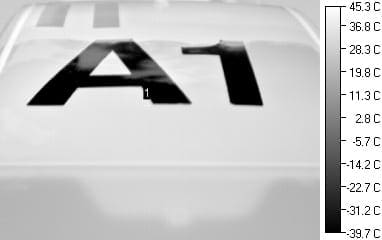
Contrast set correctly
Let’s look at an actual picture and see how adjusting gain and contrast affect it.
In this picture, contrast is set correctly because there are colors from white all the way to black in the scene.

Contrast set too wide
In this photo, contrast is set too wide. The camera wants to find objects with higher and lower temperatures than it is finding, and has reserved certain colors it is not using.
As a result, the thermal resolution suffers. The absence of pure white or pure black from the scene indicates this problem.
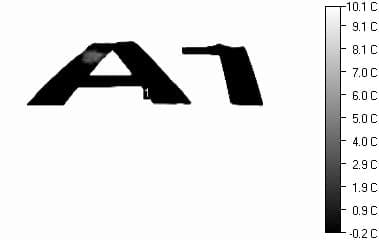
Contrast is set too high
In this photo, contrast is set too tight.
The camera wants to find only objects in a narrow temperature span. The coldest object appears pure black. The warmest object appear pure white.
As a result, we lose all temperature information outside a small band. The absence of significant gray from the scene indicates this problem.
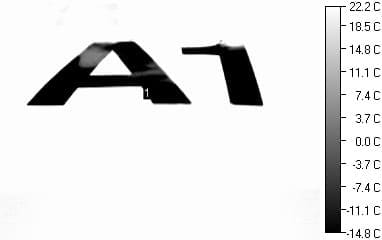
Gain is correct
In this picture, gain is set correctly.
Because equal amounts of white and black appear in the scene, this indicates a correct gain setting.

Gain is too high
In this picture, gain is set too high.
The camera wants to find cooler objects. Almost everything in the scene is hotter than the max temperature.
The serious lack of black and gray in the scene indicates this problem.

Gain is set too low
In this picture, gain is set too low.
The camera wants to find hotter objects. Almost everything in the scene is colder than the minimum temperature.
Therefore, the serious lack of white and gray in the scene indicates this problem.
Perfect practice makes perfect
There is no other way to gain confidence in your thermal imager except to practice. Like any other skill, perfect practice makes perfect. Set aside time every day to learn more.
Practice switching back and forth between modes. Discover which works best for the various challenges you face.
In the end, you may discover your Automatic Gain Control is your “go to” mode. But regularly switch to your manual mode to investigate the details hidden behind AGC.
Thermal markers for your thermal imager
Without a doubt, thermal markers enhance the efficiency and productivity of your Automatic Gain Control mode.
A thermal marker placed on a vehicle, people, animals (K9), or ground reference points will boost the communication, information and ultimate success of your operation.
Regardless of the nature of your operation, you can expect it to run safer and faster.
More Information:
For more information about Automatic Gain Control and Thermal Markers give me a call.443.292.8885
You can also contact me via our Contact Form.
Read More about your Thermal Device!!!
Breaking Down The Thermal Color Palette So Even Your Kids Understand

Since 2006, Tom has been the driving force behind IR.Tools, dedicated to delivering top-notch infrared solutions to the military, law enforcement, and sportsmen communities.
What began with a single infrared patch has blossomed into a comprehensive store featuring hundreds of IFF patches, vehicle IFF, an extensive suite of thermal training targets, and tools for drone pilots.
Beyond his innovative products, Tom is passionate about educating users on infrared technology and showcasing how advancements in IR can enhance their operations.
Tom holds an MS in Mechanical Engineering from the University of Maryland and an MBA from Regents University.

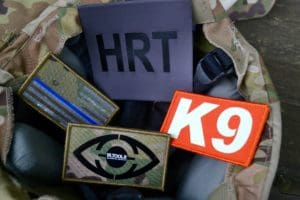
I’m new to thermal imaging but adapting it to hunting… primarily squirrels. According to license sales, there are about 9.4 million of us out here. I’m struggling to understand the use of manual AGC (auto span and level control) on my Seek Reveal Pro imager to tease out the squirrels in a tree. Do you have published or online “how to” sources that might help with the span and level temperature ranges that might allow manual span/level control use for better “seeing” a squirrel in a tree? Thermally speaking…